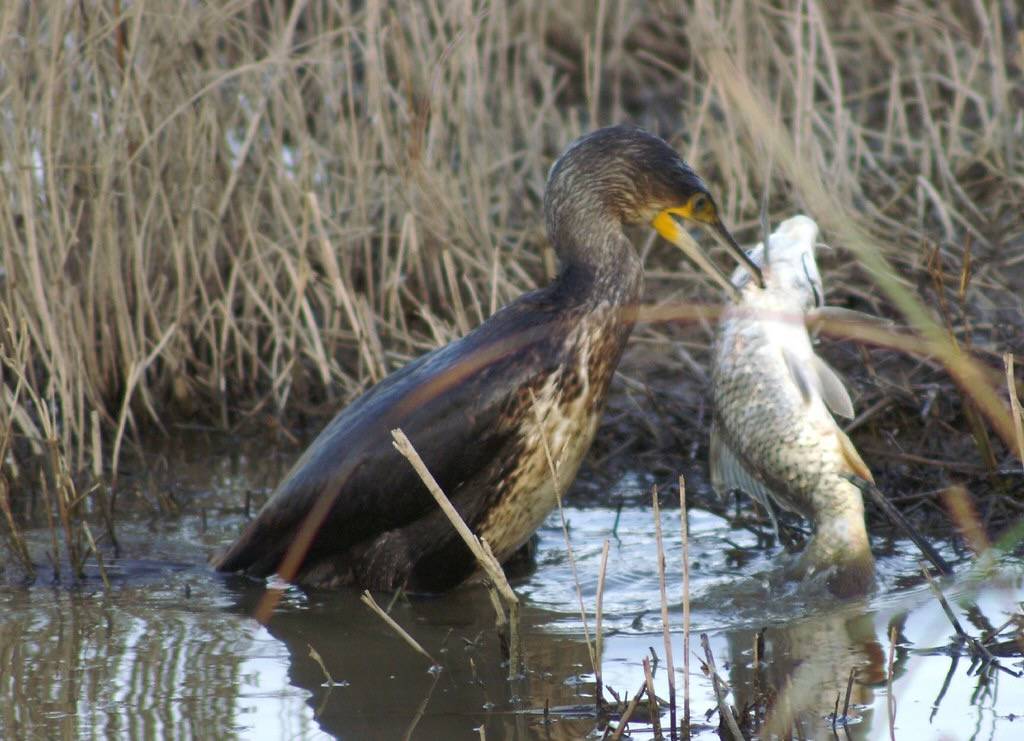Great Cormorant
Several solitary Great Cormorants have visited Salter Grove during the winter months since records began for the park in 2002. They were usually seen on the rocky islets south of Rock Island from vintage points along the southern portion of Marsh Trail.
They are taller and stockier than the dozens of Double-crested Cormorant that frequent the park from April through October. During the breeding season, the Great Cormorant has white feathers on the top part of the throat and flanks whereas the Double-crested has dark feathers in both these areas.
It will eat crustaceans and marine worms but mainly dives to feed on fish such as Atlantic cod, capelin, cunner, mummichog, pollock, rock gunnel, sandlance, sculpins, tautog, winter flounder and other bottom dwelling flatfishes. It uses its heavy hooked beak to extract prey from rocky crevices when necessary. It hunts in groups, chasing and diving for fish together. After surfacing, birds with fish in their beaks become fair game for the unsuccessful hunters.
It must be a very efficient predator since some individuals have been recorded to spend only 20 minutes per day foraging during the summer. Like the Double-crested Cormorant, the Great Cormorant will hold its wings aloft to dry after a dive because it does not produce sufficient preen oil to waterproof its feathers.
The Great Cormorant is widespread in the Old World. Previously, breeding populations in North America were limited to small areas of northeastern Canada but its nesting range has now extended into New England. The birds seen at Salter Grove during the winter are birds that breed further north.
Its nest is a pile of sticks usually placed on the sheltered ledge of a cliff up to 300 feet above the ground or water. It will nest on the ground where nest predators are absent. Old World populations will nest in trees near freshwater rivers and lakes but the North American populations only occur in saltwater coastal environments.
Instead of fishing gear, fishermen in China and Japan have historically exploited the fishing skills of the Great Cormorant. A line or a ring is placed around the neck to prevent the cormorant from swallowing properly. Forcing open the cormorant's bill then triggers a regurgitation reflex to release the fish caught. In European countries where it is abundant, licenses are issued for culling and hunting cormorants because they are thought to negatively impact fish farms.











![Great Cormorant pair [Explored] by Tarique Sani is licensed under CC BY-NC-SA 2.0.](/_files/public/Bird Galleries/Great Cormorant/12 Great Cormorant pair 14mar10.jpeg?w=350?blur=10)



![Great Cormorant [2/100]](/_files/public/Bird Galleries/Great Cormorant/16 Great Cormorant juvenile 5jan17.jpeg?w=350?blur=10)

